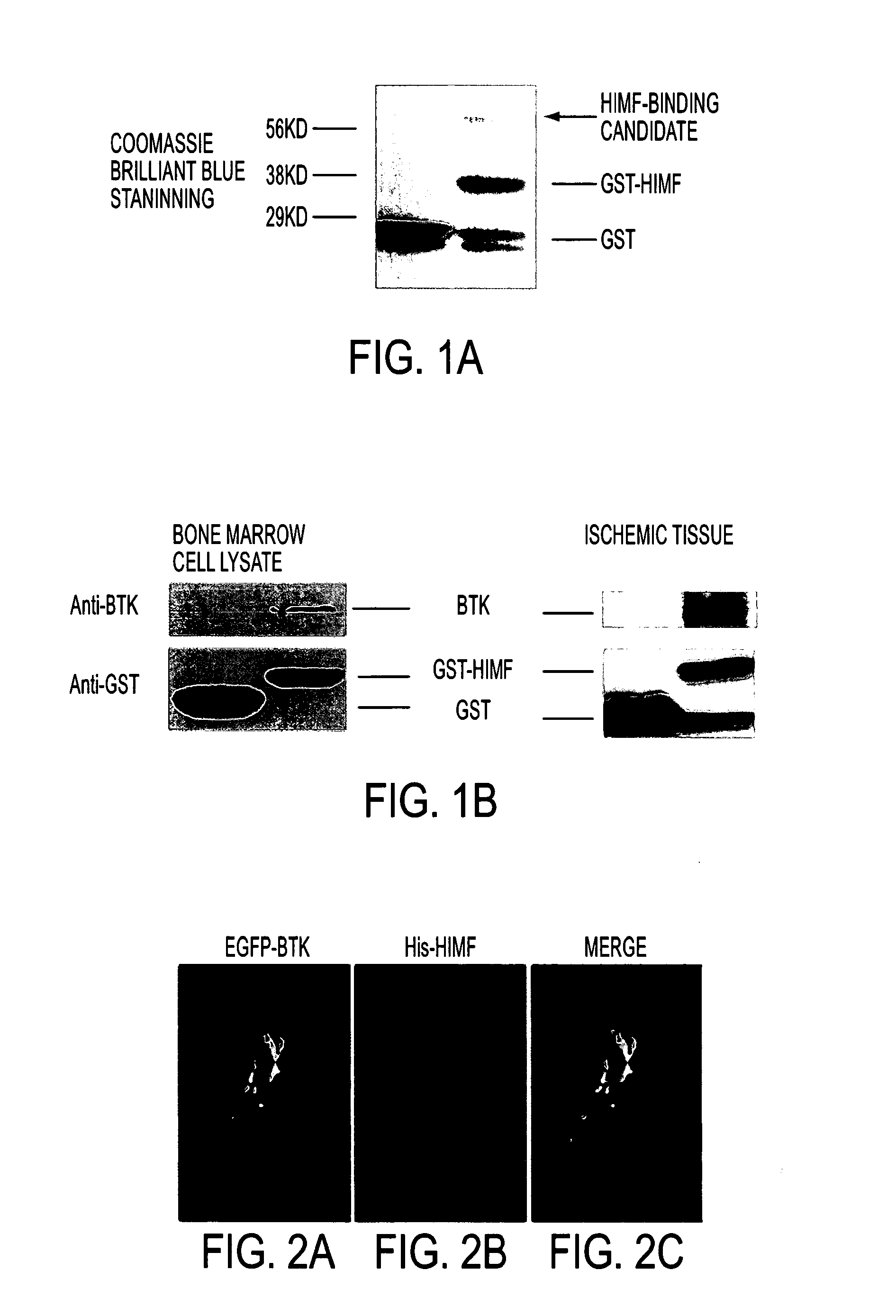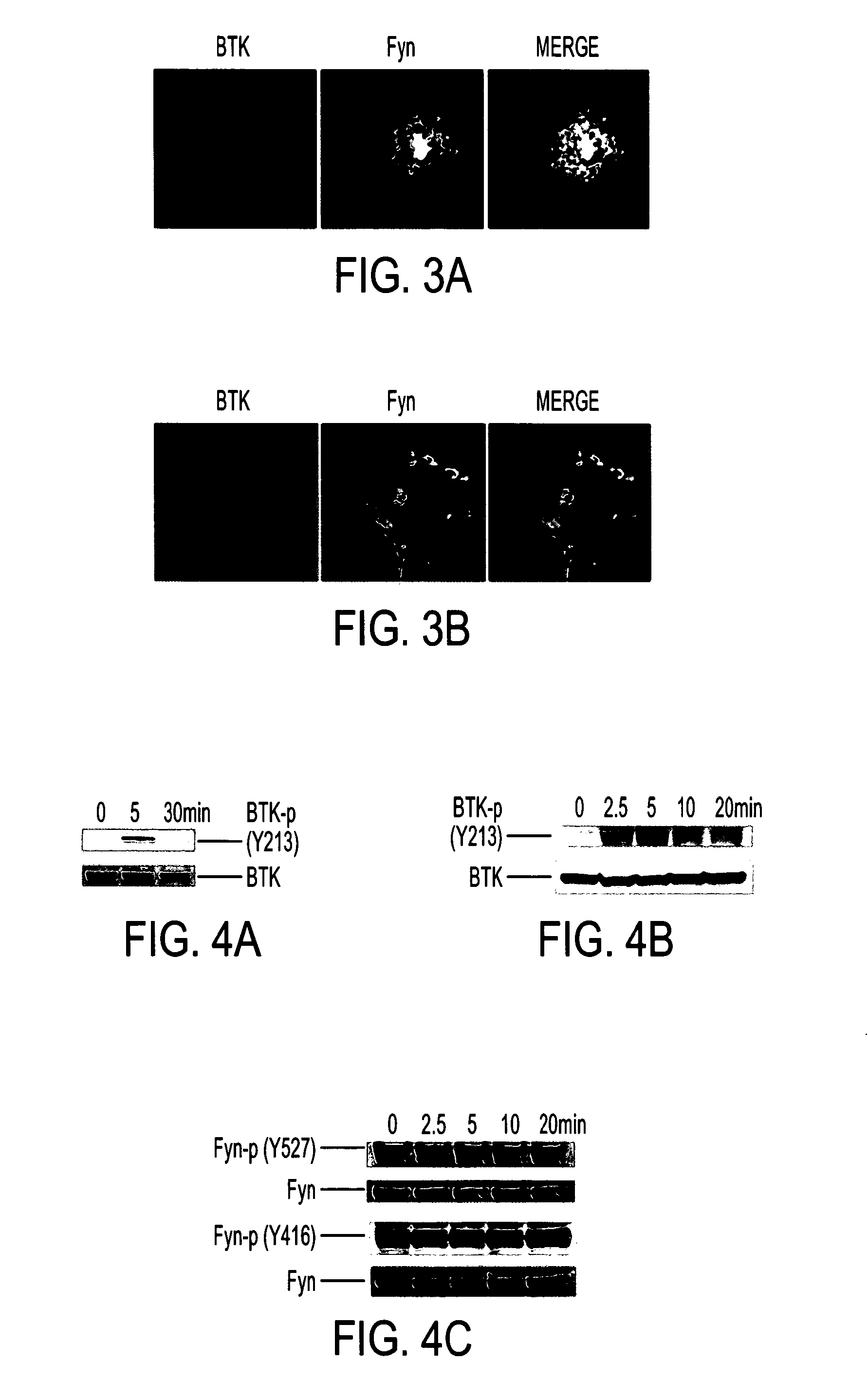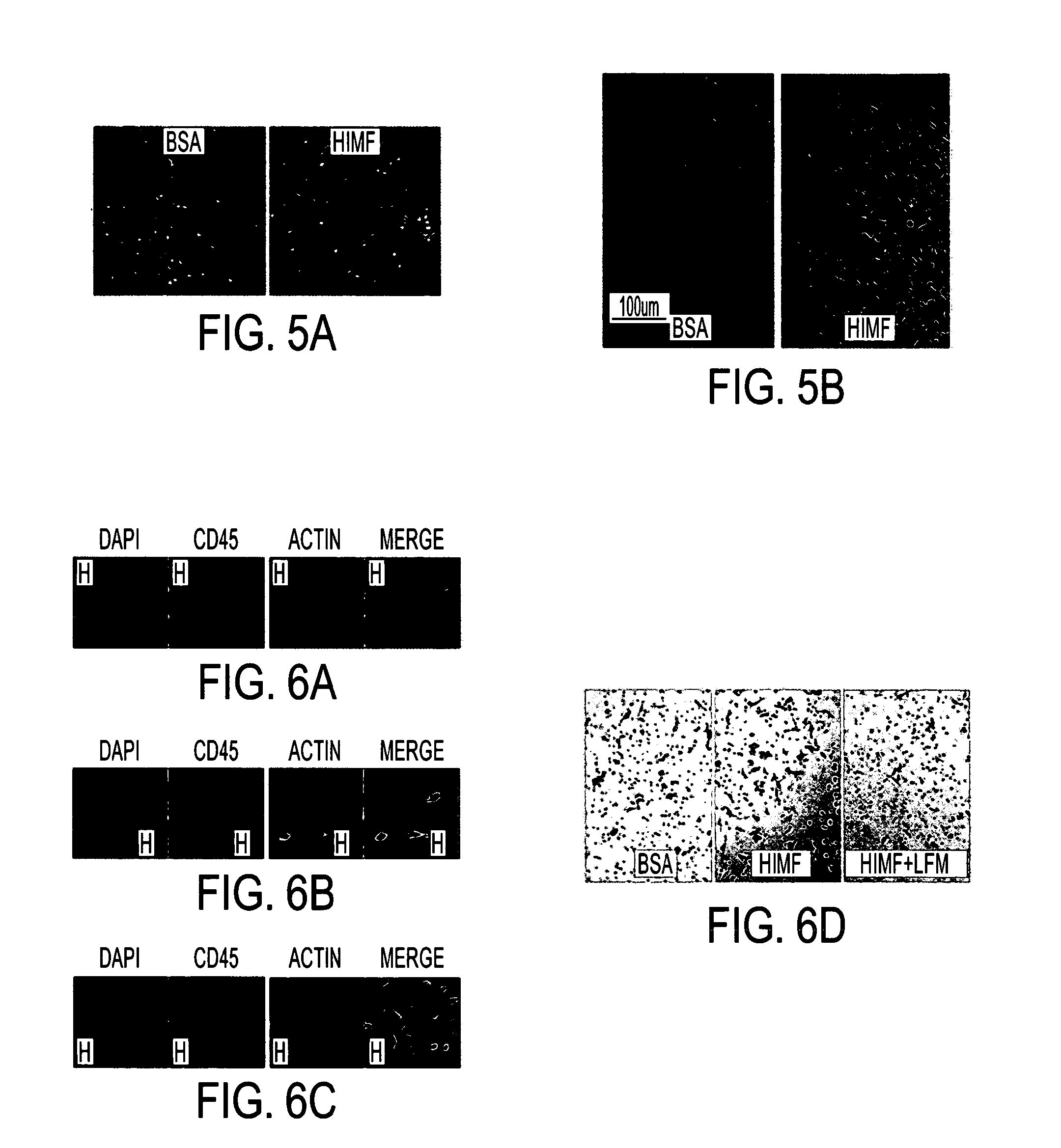Himf and btk in pulmonary, cardiac and inflammation disorders
a technology applied in the field of pulmonary, cardiac and inflammation disorders, can solve the problem of incomplete functional understanding of this family of proteins
- Summary
- Abstract
- Description
- Claims
- Application Information
AI Technical Summary
Benefits of technology
Problems solved by technology
Method used
Image
Examples
example 1
Methods and Materials
[0049]Constructs and reagents. Flag-tagged HIMF was prepared as described previously (3). GST-HIMF vector was constructed by inserting the coding sequence of mouse HIMF (digested from TA vector with EcoRI and XhoI) into pGEX-5X-1 with the sites of EcoRI and XhoI.
[0050]Antibodies and inhibitor. Anti-β tubulin and actin monoclonal antibodies, anti-CD45 rat polyclonal antibody, and anti-Fyn rabbit polyclonal antibody were purchased from Sigma. Anti-BTK monoclonal antibody, anti-BTK phosphorylation (Tyr223), and phospho-Src family (Tyr416) polyclonal antibodies were purchased from Cell Signaling Technology, Inc. Anti-Fyn (pY528) phospho-specific antibody was purchased from BD Transduction Laboratories. Anti-his monoclonal antibody and anti-GST monoclonal antibody were purchased from Novagen. FITC and rhodamine-labeled secondary antibodies were purchased from Jackson ImmunoResearch. BTK inhibitor LFM-A 13 was purchased from Calbiochem.
[0051]Cell culture and transfect...
example 2
[0059]BTK was pulled down by GST-HIMF. To search for HIMF binding partners, we first prepared bacterial lysate for GST and GST-HIMF proteins and then conducted bone marrow cell culture for protein lysates. Glutathione sepharose-bonded GST-HIMF and GST proteins were then used to pulldown the candidate protein from bone marrow cell lysate. As shown in FIG. 1A-1B, GST-HIMF pulled down a protein of approximately 70 kd. The candidate band was cut from the gel and sent for mass spectrometry, where a protein corresponding to BTK, known to be involved in B cell maturation, was identified.
[0060]To confirm our finding, we conducted two other binding experiments. First, bone marrow lysate and bacterial lysates of GST and GST-HIMF were used in pull-down assays. BTK antibody was used for detection after the pull-down samples were run on SDS-PAGE and transferred to the PC membrane. As indicated in FIG. 2A, GST-HIMF pulled down BTK from bone marrow cell lysate but GST did not.
[0061]To confirm HIMF...
example 3
[0062]Co-localization between BTK and HIMF. To demonstrate that BTK acts as a HIMF binding partner in the cells and to better understand the nature of this interaction, we conducted experiments to see if BTK and HIMF co-localize in bone marrow cells. Bone marrow cells were cultured on cover glasses and co-transfected with EGFP-BTK and his-HIMF plasmids. As shown in FIG. 2, BTK and HIMF co-localized in transfected bone marrow cells.
PUM
 Login to View More
Login to View More Abstract
Description
Claims
Application Information
 Login to View More
Login to View More - R&D
- Intellectual Property
- Life Sciences
- Materials
- Tech Scout
- Unparalleled Data Quality
- Higher Quality Content
- 60% Fewer Hallucinations
Browse by: Latest US Patents, China's latest patents, Technical Efficacy Thesaurus, Application Domain, Technology Topic, Popular Technical Reports.
© 2025 PatSnap. All rights reserved.Legal|Privacy policy|Modern Slavery Act Transparency Statement|Sitemap|About US| Contact US: help@patsnap.com



